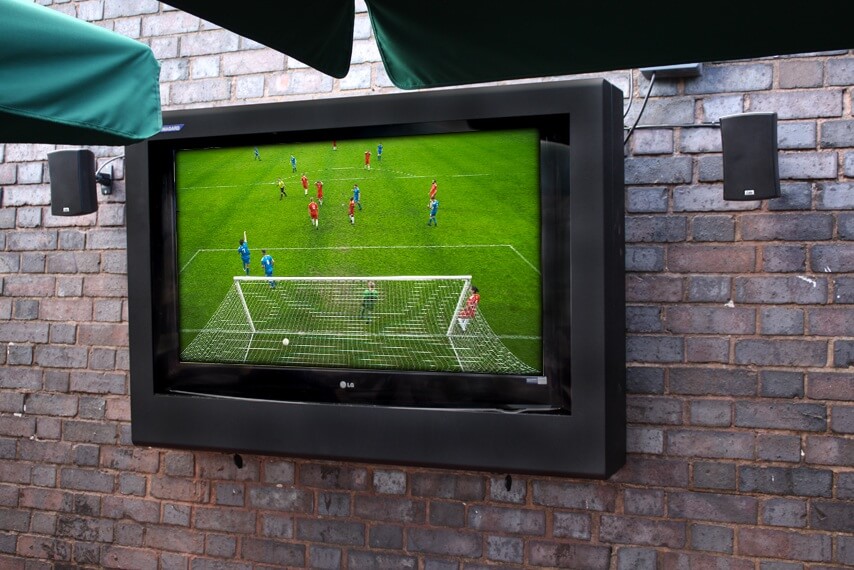Taking an LCD TV screen outdoors is an idea many businesses and homeowners have. Because of the flat and dynamic nature of LCD TVs, they are easily installed on walls and outdoor surfaces, making them ideal for outdoor TV viewing.

Pubs and bars can benefit from an outdoor TV helping to keep customers happy and on the premises longer—especially considering smoking bans and the number of people that spend time outside a premises.
Of course, simply carrying an indoor TV outside isn’t going to work, as the first rain shower will disable it. Outdoor TV protection is a must, therefore, but there is a lot more to think about than just rain and the weather.
Obviously, weatherproofing a screen is necessary to allow its use outdoors, and this is often achieved using a waterproof LCD enclosure—usually sealed to IP65 or NEMA equivalent—but an LCD enclosure needs also to offer protection in other areas.
Temperature control is essential for any outdoor TV as LCD screens (and plasmas) have a limited operating temperature range. All TV screens produce heat when in operation so when the screen is housed in an LCD enclosure the heat needs expelling.
Of course, just having a vent to allow airflow is complicated by the need to keep the device waterproof, so sophisticated ventilation systems on LCD enclosure are used to allow hot air out and cool air in whilst preventing moisture from getting inside.
High ambient temperatures can easily lead to overheating too, especially when the sun is bearing down on the display. Internal cooling fans inside the LCD enclosure need to be sufficient to dispel heat during seasonal peak temperatures, otherwise other cooling systems like air-conditioning need considering.
In winter, the opposite problem occurs. Plummeting temperatures, especially when the ambient falls below zero, will also disable a screen. Keeping the internal temperature of the LCD enclosure above the minimum for screen operation often requires using insulation and heaters, but these need thermostatic control to avoid overheating.
Physical protection is also a must for a permanent outdoor TV. Risk of theft and vandalism requires a secure mounting, a lockable enclosure and anti-vandal measures such as shatterproof screens and a steel housing for the enclosure.
Placing a modern LCD or plasma screen outside does pose several challenges but if you use a trusted LCD enclosure manufacturer such as Armagard, who will assess your needs and requirements, you can soon gain the benefits of an outdoor TV and the rewards it can bring to your business.
Comments are closed.